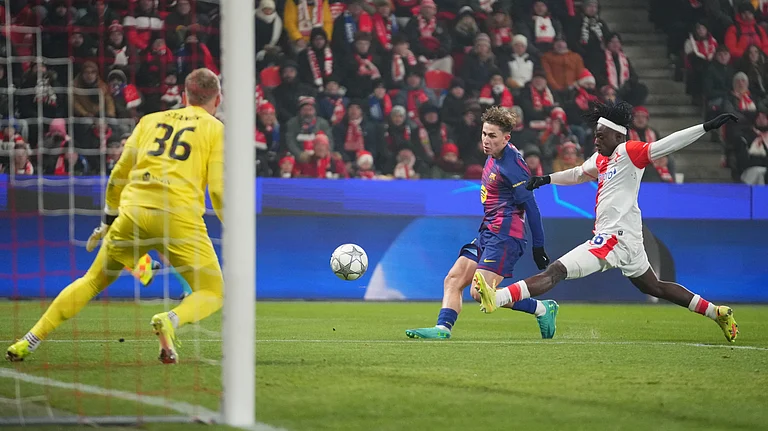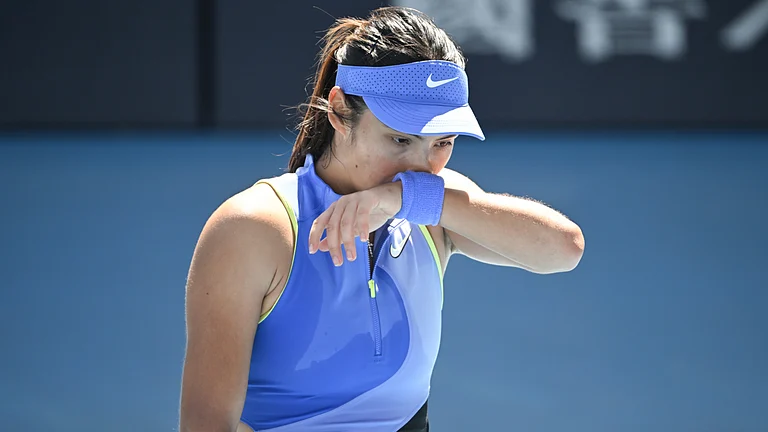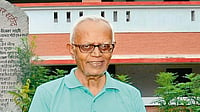Uttar Pradesh chief minister Yogi Adityanath’s tenure has been eventful for the past four-and-a-half years. He has earned bouquets for his development initiatives, but has also received brickbats for his controversial decisions. With a few months left for the next assembly elections, his government has been facing a huge challenge—the second wave of the coronavirus pandemic. In an exclusive interview with Ruben Banerjee and Giridhar Jha, he explains how his government dealt with the situation and exudes confidence that the BJP will return to power in 2022. Excerpts:
The second wave of COVID-19 has wreaked havoc. Was your government prepared?
We have successfully implemented the model of 3Ts (test, trace and treat), coupled with partial curfew and aggressive vaccination to deal with the situation. It has brought positive results. Our caseload is down by almost 70 per cent from the peak on April 23 when we had 310,700 cases. The recovery rate has gone up to 94.3 per cent, while the positivity rate has come down to 1.6 per cent.
We have done more than 4.70 crore tests, the maximum by any state. Our 3T policy has disproved experts who were saying UP would record one lakh cases a day. Our holistic approach and combined efforts helped us bring the cases down.
ALSO READ: Road To Delhi Starts From UP
It is true that the second wave has been quite severe and it overwhelmed the system for a while. The extent of the severity of the mutant virus was not known. I don’t think many of us were prepared to tackle that level of severity. Yet, we never let the situation go out of sight. Since the first wave, I have been holding meetings to review the situation on a day-to-day basis. We are continuously working on creating infrastructure and raising awareness among people about necessary precautions. The unpredictable ebb and flow of the virus called for a requirement of oxygen, the extent of which was not known. Apart from that, there was sufficient infrastructure to tackle the second wave.
How different is the second wave for your government?
When the first wave came, we didn’t have a single laboratory to do Covid tests. We had to send samples to the National Institute of Virology in Pune. Now we have the capacity to do 1.75 lakh RT-PCR tests each day. We have been working constantly to increase the number of beds for Covid patients since last year. When the initial cases were recorded in Agra in 2020, we had to send the patients to Safdarjung hospital in Delhi because we didn’t have the facility to treat them. Today, we have 80,000 ICU oxygen beds. We have been continuously working to upgrade the health infrastructure. With constant monitoring, we have managed to break the Covid transmission chain and reduce the spread in the second wave. Also, we have floated a global tender to accelerate the vaccination drive.
ALSO READ: In UP Maths, BJP Gives No Quarter
Covid has spread alarmingly in rural areas, unlike the first wave. How are you dealing with it?
We have bolstered oxygen supply. More than 490 oxygen plants are being set up in different hospitals and community health centres (CHCs). We are providing 20 oxygen concentrators to each of these centres in rural areas. During the first wave, when we received a large number of migrants, we put a mechanism in place requiring migrants to quarantine in isolation centres, which were created in every village. We created awareness among the villagers about the need to encourage their migrant relatives to register and isolate for 15 days. Though we received a lesser number of migrants this year, we created isolation and quarantine centres to test them.
Our concept of micro-planning, house visits, concurrent monitoring and follow-ups has been acknowledged by the World Health Organization (WHO). Our surveillance teams have been distributing medical kits, checking people in all the villages for symptoms just like we did last year. So we never took things lightly as these teams have been continuing their tasks since the first wave. In one year, we have covered 17 crore of the 24 crore people in the state. Though many experts were of the opinion that Covid would spread like wildfire in the rural areas, we proved them wrong. From the first week of April to May 20, almost 1.2 crore tests were done, of which 65 per cent were done in rural areas. At least 68 per cent of villages are now free of Covid symptoms.
There were reports of several deaths from shortage of oxygen and essential medicines in UP hospitals…
I must tell you that there has not been a single death because of the shortage of oxygen in UP. Although there were some alarms raised by certain hospitals about oxygen shortage, sufficient oxygen was found when many of them were checked. As for those facing a genuine problem, oxygen supply was augmented immediately. It is possible that it may have been arranged at the last minute in some places after they ran out of stock. But oxygen was arranged.
ALSO READ: Safely Cornered Out There
In fact, we are the first state to create a system in which the overall oxygen supply was managed efficiently. We didn’t have in-house manufacturing plants, but we made arrangements to get oxygen from places as far as Jharkhand. We received ample assistance from the Central government. The Indian Air Force gave us planes to send our tankers to oxygen plants. These tankers were brought back by the railways via Oxygen Express special trains. The pre-second wave oxygen demand in the state used to be a maximum of 350 MT, but we arranged for 1,100 MT in a day, which was possible because of the GPS tracking of tankers.
Also, we are the first state to implement ‘oxygen audit’, which has been replicated by many states. We found that despite providing enough oxygen, some hospitals were still complaining about shortages. So it was necessary to keep a tab on its use. We found out that oxygen consumption of a few institutions, which were audited, went down by 20 per cent. It helped us in managing oxygen supply. As of now, we have surplus oxygen in the state. We are now setting up about 450 oxygen plants in hospitals with the help of the Central government and the industries. All the district hospitals will now have standalone oxygen plants.

As for medicines, the government provided Remdesivir injections free of cost to critically ill patients. To curb the illegal sale of essential drugs, the National Security Act (NSA) was invoked against people involved in black-marketing of COVID-19 medicines.
There were reports about bodies of suspected Covid victims being thrown into rivers or buried by the riverside in UP? How did it happen and what steps have you taken to prevent it?
The practice of riverside burials is traditional and has taken place for decades in the state. Some villagers do not cremate their dead because of a Hindu tradition during certain periods of religious significance. Instead, they dispose of the bodies in rivers or bury them in graves on riverbanks. Of course, the practice is detrimental to the ecosystem. We have deployed the State Disaster Response Force and the Provincial Armed Constabulary along rivers and water bodies, and also alerted panchayats and urban local bodies to see that no corpse is dumped in rivers. The government has been creating awareness to dissuade people from such action.
Municipal corporations will bear the expenses of funerals at all crematoriums, cemeteries and cremation grounds within their jurisdiction. It has been made mandatory to follow COVID-19 protocols during such funerals. The cost will be borne by the urban civic bodies from their resources or from the State Finance Commission. A maximum amount of Rs 5,000 will be spent on each funeral.
Scientists and doctors fear that the third wave of COVID-19 is imminent? Is the government better prepared now to deal with it?
We are getting ready for the unpredictable. Our efforts to combat the first, second and third waves are being orchestrated using an all-of-government approach. We are all geared up to combat a possible third wave. A 100-bed paediatric ICU (PICU) ward will be prepared in all medical colleges. At least one PICU will be established in all the 75 districts in the next 15 days. Lokbandhu Hospital in Lucknow will function as a Mother and Child Covid Care Centre. Paediatric beds with all facilities will work as ‘Raksha Kavach’ in every district hospital. In fact, the Bombay High Court has praised our model for protecting people and children from infection and curbing the spread of the second wave. A division bench of the court, comprising Chief Justice Dipankar Dutta and Justice Girish Kulkarni, took cognizance of the preparation of our government to increase the number of paediatric ICU beds so as to tackle the third wave when children would likely be most vulnerable. The bench has advised the Maharashtra government to replicate our model.
We have decided to set up 50 to 100 paediatric bed PICUs in all medical colleges and 20-30 bed PICUs in all district hospitals to protect children. We have set up PICU for children above one month, NICU (neonatal intensive care unit) for children below one month, and SNCU for children born in women’s hospitals. If needed, severely infected children will be provided oxygen facilities on these beds. We have previously tackled encephalitis in children of Purvanchal and controlled 95 per cent of Japanese encephalitis cases in the state.
How has been your tenure as chief minister till now? Do you want to do something you could not do so far?
Before we went to the polls in 2017, our party had prepared a Lok Kalyan Sankalp Patra after a lot of deliberations. We implemented it with full force by linking it to various welfare schemes of the government. I am the first chief minister who visited all 75 districts within a year of government formation. We prepared a detailed action plan for the development of each district. My visits gave me an opportunity to study local issues. It helped us make our plans accordingly and get good results on the ground across the state.
When you took over the reins in UP in 2017, what was the biggest challenge before you?
The image of Uttar Pradesh! When we came, there was a need to change the perception that people had about UP in the country and abroad. We made all our efforts and I am happy that we succeeded in changing that. Over the past four years, we converted a BIMARU (sick) state into a capable and formidable state. I remember that when I became the chief minister, every financial institution and bank maintained a distance from us. No one wanted to give money to UP and no one wanted to collaborate for any project with us. When we had to waive the loans of farmers, we tried to contact the banks to issue bonds, but our phones were not replied. Thanks to our efforts, the scenario is different now. Today, if we take up a project, all the banks and financial institutions make a beeline for us to cooperate. This is our big achievement. We have done such work in every sector.
Assembly elections are due in UP in a few months. Unlike last time, the Opposition has announced that it would fight against you separately this time. Does it make your way easier?
These kinds of statements in politics are not going to make any difference. In the Lok Sabha elections, they have fought together with their combined strength. The people of UP are aware of the reality of these political parties. In the previous assembly elections, the Prime Minister had talked about ensuring UP’s development through our double-engine government. With the kind of development work we have done, we have found a place in the hearts of the people. They know that the Prime Minister has lived up to his promises and our government is doing good work. They know that the Opposition is full of negativity and did not do anything during their tenure. Nor would they do anything in the future. They will all fall flat in the next assembly elections as well.
Will the presence of Priyanka Gandhi Vadra, who has been proactive in UP politics, make any difference to the Opposition’s prospects, the Congress in particular?
Even a Congressman can see what their position is in the state? The results of 2014, 2017 and 2019 elections, as well as the by-elections, have shown where the Congress stands today.
It is said that the Congress will benefit due to the farmers’ movement…
It won’t matter.
Your opponents often allege that law and order has collapsed in UP during your tenure?
The investments coming into the state and the overall change in people’s perception of it are a big testimony to the fact that the rule of law prevails in the state. It shows what kind of law and order UP had during the previous regimes of Congress, Samajwadi Party or Bahujan Samajwadi Party and what it is today.
You are invariably invited to campaign in the elections in other states. You are a popular and much-sought-after star campaigner of your party outside UP also…
This popularity is not mine. It is of the party and the vision of the Prime Minister. The implementation and acceptability of his model of development and good governance is the reason behind it. Today, under the guidance of the Prime Minister, UP has moved in the right direction.
But you have been a controversial figure as well?
I am not controversial and I take every step in the interest of the state. I have a commitment to the 24 crore people of this state and it is my responsibility to work relentlessly to ensure their security and prosperity.
You are also known as a strict administrator, but there have been allegations that UP Police under you have become autocratic?
UP Police are neither demoralised nor autocratic. They are working within the purview of law. These allegations come from those who misused the police in their time for their political interests. Over the past four years, the administration has gone about its job without any undue political interference. And results are visible in every sector.
It is said by your critics that there is a feeling of insecurity among UP’s minorities during your tenure…
Not a single riot has taken place in the state in the past four years. It is not only in the interest of the state but also of all the people who have to bear the brunt of riots. Now, every festival has passed peacefully without any disruption or chaos. I feel every side is satisfied and feels safe and secure now. We have promised safety for everyone, and no one is allowed to break the law. Everyone has to stay within the purview of the law and say whatever they have to say. The government’s job is to listen to everybody and take steps in the larger public interest. But if someone does not want to listen, refuses to communicate and violates the laws, the government has to act.
People have the right to protest.
No one is stopping anybody from staging a protest, but no one has the right to indulge in arson or sabotage or assault people.
Your rivals accuse you of pursuing the politics of polarisation?
We do not pursue politics of polarisation. It is their statements that polarise.
Some of the decisions taken during your tenure such as the formation of the Anti-Romeo Squad, the Love Jehad laws or campaign against the alleged mafia by confiscating or demolishing their property, to name a few, turned out to be controversial…
The public expects such work. No step has been taken with prejudice. Seeking compensation from people who damage government property is not a wrong thing. If someone has misused power to encroach public property, it is the responsibility of the government to take action. No person can be allowed to usurp public property and create an atmosphere of chaos and anarchy.
Construction of the Ram temple began in Ayodhya during your rule. How do you feel about it?
It is a matter of pride for us that the construction of a grand temple in Ayodhya has started due to the efforts of the Prime Minister. We are thankful that the Prime Minister himself came to Ayodhya and laid the foundation of the temple. The whole country and its people are elated over the construction of a grand Ram Temple in Ayodhya.
If you return to power next year, what will be your roadmap for UP?
We already have the action plan for not only five years, but for ten and fifteen years, and all of them are going on simultaneously. It is certain that the BJP will keep coming back to power in UP on the strength of its work. Only BJP has to stay here.


























